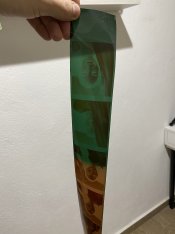Edi
Member
Hello guys,
Have any of you had this issue before where the lab gives you back the developed roll but at the end of it its colored green? the rest of the roll seems perfectly fine. I haven't digitalized it yet but I'm attaching the image of how it came.
Any help would be greatly appreciated.
Have any of you had this issue before where the lab gives you back the developed roll but at the end of it its colored green? the rest of the roll seems perfectly fine. I haven't digitalized it yet but I'm attaching the image of how it came.
Any help would be greatly appreciated.












